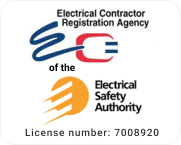Understanding the ‘Levels’ of Electric Vehicle Charging
Whereas electric vehicles (EV) are looking like the future of motoring, electric vehicle charging seems to be playing catch-up somewhat.
In an earlier post we talked about installing an EV charger setup in condos – important, too, given how urban living continues to shift towards condominiums, and where you do not have absolute access to the public spaces. Nevertheless, recent changes in by-laws and legislation have made EV charger installation in condos much easier for apartment owners (and they have taken advantage too).
First and foremost, you should know your car and the manufacturer’s recommendations. Adhering to these is the best way of not voiding your warranty and getting the most life out of your car’s battery.
But electric vehicle charging has flummoxed many too. In this post we look at the various charging options, which are the most common and what you should watch out for when you encounter an unfamiliar charger.
Level 1 charging – Level 1 chargers are the most common because they come bundled with every plug-in hybrid or pure electric vehicle. As it at stands at present, Level 1 chargers are the slowest way to electric vehicle charging. Though they add only about 8 kms of range per hour of charging, these work off ordinary household plug points – making them a versatile way to top-up your EV’s range.
Level 2 charging – This is at present the ‘best’ compromise between the sluggish Level 1 charger and the rarified Fast charger. These chargers have to be installed in a semi-permanent manner to the electrical circuit. Level 2 chargers supply current at 240 volts and can add up to about 40 kms of range per hour of charging. This means they are sufficient to recharge one car wholly in a matter of a few hours (overnight). Since Level 2 chargers use the common J1772-2009 connector, they are made by a number of different manufacturers. Quality, power configuration, installation and convenience features (like scheduled charging, smartphone connectivity, interfacing with the car), therefore, vary enormously between different chargers and choosing the right one is extremely important. Cable length is extremely important too: too short reduces parking options; too long makes it difficult to manage.
Fast charging (DC) – Fast charging (colloquially referred to as Level 3 or 4) differs from the previous two in the way it delivers electricity and in the fact that there are no common standards for electric vehicle charging. Thus, while a Level 2 charger can charge a number of different vehicles, fast chargers will almost certainly charge a certain subset. ‘Fast charging’ can take your car from 0 km range to about 80 per cent charge anywhere between 30 minutes to 1 hour! Instead of supplying your car with AC current, which must be converted to DC, fast chargers supply DC current itself, dramatically increasing the charging rate. However, you will find these in commercial establishments like gas stations and public car parks; and their use is usually chargeable (exceptions include Tesla and its Supercharger network). Using fast chargers excessively is also said to reduce the lifespan of your battery.
Regardless of which charging apparatus you choose, it is essential that you call electricians who can install it safely for you. Electric vehicle charging can require upgrading the house’s electrical panel, installing high capacity breakers, wiring and more. Any flaw in the system can cause dangerous short circuiting and result in injury and property damage.


